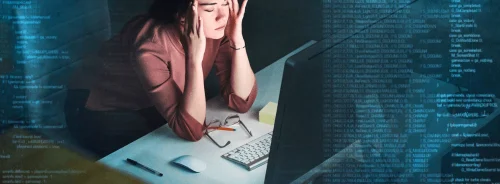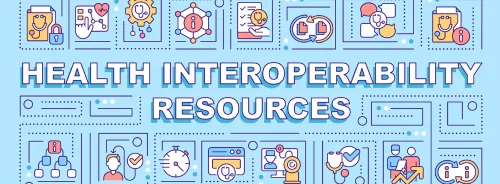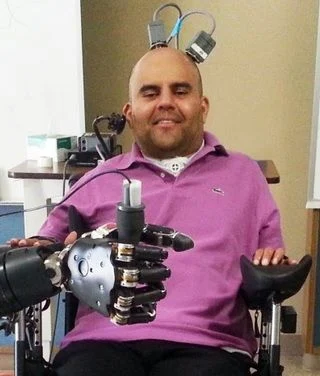A clinical collaboration between Caltech, Keck Medicine of USC and Rancho Los Amigos National Rehabilitation Center has given a patient with paralysis the ability to move a robotic arm just by thinking about it and using his imagination.
Thanks to the unique clinical trial, the patient, Erik G. Sorto, is the first person in the world to have a neural prosthetic device implanted in a region of the brain where intentions are made, giving him the ability to perform a fluid hand-shaking gesture, drink a beverage, and even play "rock, paper, scissors," using a robotic arm.
Neural prosthetic devices implanted in the brain's movement centre, the motor cortex, can allow paralysed patients to control the movement of a robotic limb. However, current neuroprosthetics produce motion that is delayed and jerky — not the smooth and seemingly automatic gestures associated with natural movement. In Sorto's case, the prosthetic device was implanted in the posterior parietal cortex (PPC) — the part of the brain that controls not the movement directly but rather our intent to move — to produce more natural and fluid motions.
The clinical trial aimed to test the safety and effectiveness of this new approach. It was led by principal investigator Richard Andersen, the James G. Boswell Professor of Neuroscience at Caltech; neurosurgeon Charles Y. Liu, professor of neurological surgery, neurology, and biomedical engineering at USC; and neurologist Mindy Aisen, chief medical officer at Rancho Los Amigos.
In earlier animal studies, the Andersen lab found that it is in the PPC that the initial intent to make a movement is formed. These intentions are then transmitted to the motor cortex, through the spinal cord, and on to the arms and legs where the movement is executed. "The PPC is earlier in the pathway, so signals there are more related to movement planning — what you actually intend to do — rather than the details of the movement execution," Prof. Andersen explains. "We expected that the signals from the PPC would be easier for patients to use, ultimately making the movement process more fluid."
The device was surgically implanted in Sorto's brain at Keck Hospital of USC in April 2013. Dr. Liu and his team implanted a pair of small electrode arrays in two parts of the posterior parietal cortex, one that controls reach and another that controls grasp. Each 4-by-4 millimetre array contains 96 active electrodes that, in turn, each record the activity of single neurons in the PPC. The arrays are connected by a cable to a system of computers that process the signals, to decode the brain's intent and control output devices, such as a computer cursor and a robotic arm.
Following the pioneering surgery, Sorto has been training with Caltech researchers and staff at Rancho Los Amigos to control a computer cursor and a robotic arm with his mind. The researchers saw just what they were hoping for: intuitive movement of the robotic arm.
Sorto, a single father of two who has been paralysed for over 10 years, was thrilled with the quick results: "I was surprised at how easy it was [to control the robotic arm]," he says. "I remember just having this out-of-body experience, and I wanted to just run around and high-five everybody."
Dr. Aisen, the chief medical officer at Rancho Los Amigos who led the study's rehabilitation team, notes that advancements in prosthetics like these hold promise for the future of patient rehabilitation.
"The better understanding of the PPC will help the researchers improve the neuroprosthetic devices of the future," according to Prof. Andersen. "What we have here is a unique window into the workings of a complex high-level brain area, as we work collaboratively with our subjects to perfect their skill in controlling external devices."
Source and image credit: University of Southern California - Health Sciences
Thanks to the unique clinical trial, the patient, Erik G. Sorto, is the first person in the world to have a neural prosthetic device implanted in a region of the brain where intentions are made, giving him the ability to perform a fluid hand-shaking gesture, drink a beverage, and even play "rock, paper, scissors," using a robotic arm.
Neural prosthetic devices implanted in the brain's movement centre, the motor cortex, can allow paralysed patients to control the movement of a robotic limb. However, current neuroprosthetics produce motion that is delayed and jerky — not the smooth and seemingly automatic gestures associated with natural movement. In Sorto's case, the prosthetic device was implanted in the posterior parietal cortex (PPC) — the part of the brain that controls not the movement directly but rather our intent to move — to produce more natural and fluid motions.
The clinical trial aimed to test the safety and effectiveness of this new approach. It was led by principal investigator Richard Andersen, the James G. Boswell Professor of Neuroscience at Caltech; neurosurgeon Charles Y. Liu, professor of neurological surgery, neurology, and biomedical engineering at USC; and neurologist Mindy Aisen, chief medical officer at Rancho Los Amigos.
In earlier animal studies, the Andersen lab found that it is in the PPC that the initial intent to make a movement is formed. These intentions are then transmitted to the motor cortex, through the spinal cord, and on to the arms and legs where the movement is executed. "The PPC is earlier in the pathway, so signals there are more related to movement planning — what you actually intend to do — rather than the details of the movement execution," Prof. Andersen explains. "We expected that the signals from the PPC would be easier for patients to use, ultimately making the movement process more fluid."
The device was surgically implanted in Sorto's brain at Keck Hospital of USC in April 2013. Dr. Liu and his team implanted a pair of small electrode arrays in two parts of the posterior parietal cortex, one that controls reach and another that controls grasp. Each 4-by-4 millimetre array contains 96 active electrodes that, in turn, each record the activity of single neurons in the PPC. The arrays are connected by a cable to a system of computers that process the signals, to decode the brain's intent and control output devices, such as a computer cursor and a robotic arm.
Following the pioneering surgery, Sorto has been training with Caltech researchers and staff at Rancho Los Amigos to control a computer cursor and a robotic arm with his mind. The researchers saw just what they were hoping for: intuitive movement of the robotic arm.
Sorto, a single father of two who has been paralysed for over 10 years, was thrilled with the quick results: "I was surprised at how easy it was [to control the robotic arm]," he says. "I remember just having this out-of-body experience, and I wanted to just run around and high-five everybody."
Dr. Aisen, the chief medical officer at Rancho Los Amigos who led the study's rehabilitation team, notes that advancements in prosthetics like these hold promise for the future of patient rehabilitation.
"The better understanding of the PPC will help the researchers improve the neuroprosthetic devices of the future," according to Prof. Andersen. "What we have here is a unique window into the workings of a complex high-level brain area, as we work collaboratively with our subjects to perfect their skill in controlling external devices."
Source and image credit: University of Southern California - Health Sciences
Latest Articles
healthmanagement, neuroprosthetics, brain surgery, motor cortex, robotic arm, rehabilitation
A clinical collaboration between Caltech, Keck Medicine of USC and Rancho Los Amigos National Rehabilitation Center has given a patient with paralysis the ability to move a robotic arm just by thinking about it.






